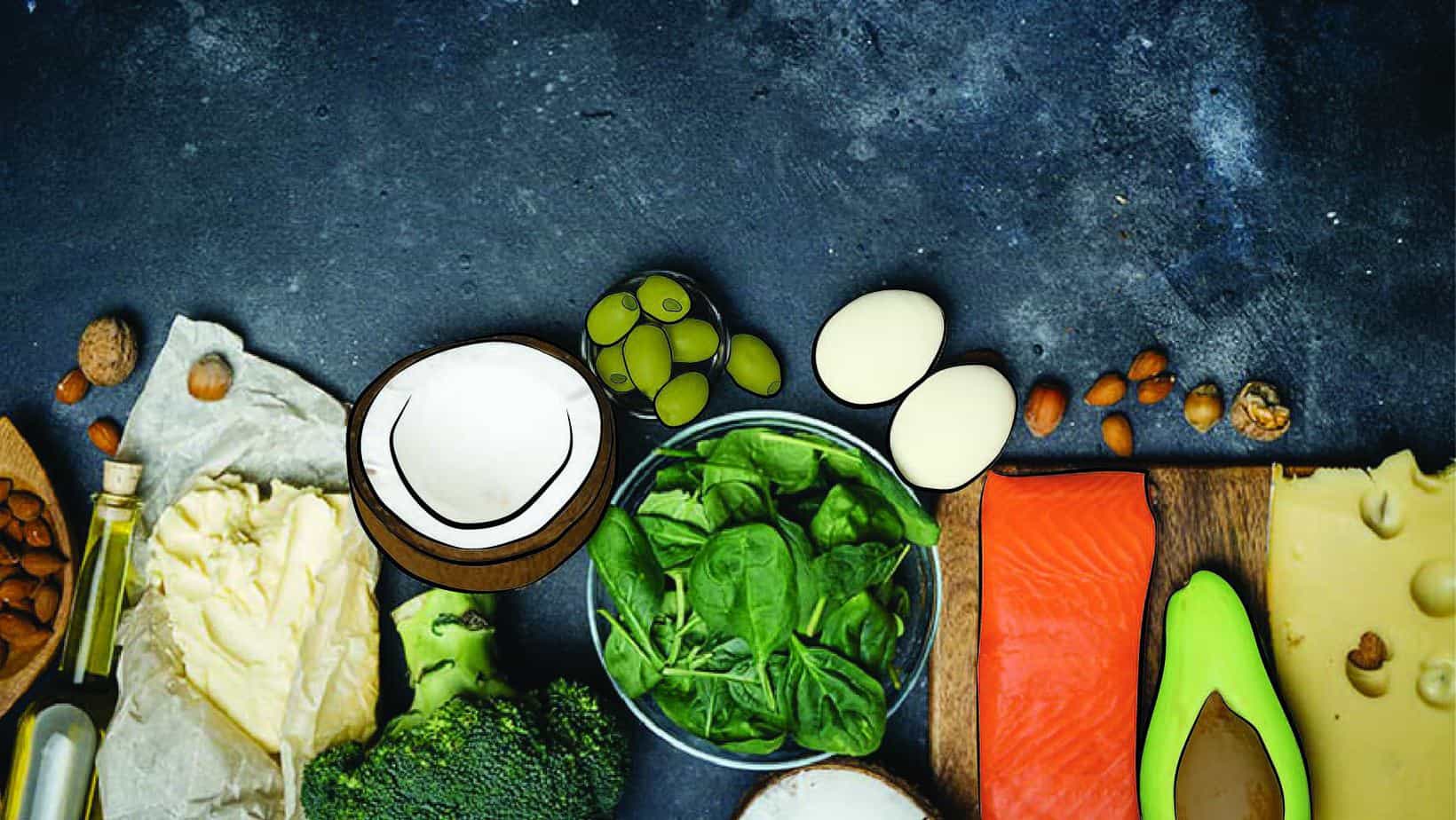
With research supporting its weight loss and health benefits, the ketogenic (or keto) diet is one of the most popular diets for people seeking to improve their health. While it can take a little time to learn how to enter and stay in a state of ketosis, the keto diet can provide an effective approach if you want to make a change to help both your body and brain.
What Is the Keto Diet?
The keto diet is a high-fat, low-carb diet. Specifically, it breaks your food consumption down into an average of 75 percent fat, 20 percent protein, and a staggeringly tiny 5 percent carbohydrates. This represents a big change from the average American diet. In fact, the current Dietary Guidelines for Americans recommends a diet that includes 45 percent to 65 percent carbs.
Designed to retrain your body to burn fat for energy instead of carbohydrates, the keto diet significantly reduces your daily carb intake and replaces it with fat. This encourages your body to enter a state called ketosis, in which your body burns fat to create ketones for fuel. However, ketosis is a fragile state. That means you’ll need to carefully watch what you eat on a keto diet to ensure you stay in a state of ketosis. You can kick-start ketosis by conducting a fast. The body typically enters ketosis after approximately 16 hours of fasting.
Key Benefits
There’s a reason people rave about the keto diet. A host of scientific studies demonstrate its ability to not only promote weight loss, but also help fight off several chronic diseases. Here are three key benefits to consider:
- Weight Loss: If you want to lose weight in a healthy way, the keto diet can provide a sound approach. Research consistently demonstrates it offers a more-effective weight loss tool than many other existing diets. In fact, one study comparing the keto diet to a more traditional, calorie-restricted diet found that people on the keto diet lost more than twice the amount of weight in the same time period.
- Improved Insulin Sensitivity: When it comes to creating fuel from carbohydrates, insulin plays a key role. Yet, the typical American diet can overwhelm the human body with sugars and make people insulin-resistant. That means the body must create more and more insulin to produce the same fuel-generating effect. While research shows an association between high insulin levels and several chronic diseases like diabetes, one study found the keto diet can improve insulin sensitivity by up to 75 percent.
- Reduced Risk of Alzheimer’s: The keto diet has neuroprotective properties and research shows it can make a useful tool for combating Alzheimer’s and other neurodegenerative diseases. One recent study found that participants who followed a keto diet displayed reduced symptoms of both Alzheimer’s and Parkinson’s diseases. Basically, this diet helps your brain help itself.
Foods to Eat
To achieve success with the keto diet, you must cut out carbs wherever you find them and eat high-fat foods instead. One bonus of this approach: Your meals will feel a lot more filling when carbs no longer represent the majority of food on your plate.
Here are some of the most common foods included in the keto diet:
- Avocados: Add this superfood to everything.
- Select fruits: Such as blueberries, blackberries, strawberries, cantaloupe, and watermelon
- Tofu: Particularly whole-fat tofu. Tempeh is another great option for protein.
- Nuts and seeds: Almonds, walnuts, pumpkin seeds, sunflower seeds, and macadamia nuts are all great options.
- Cheese: Stick to unprocessed varieties like paneer, goat cheese, cheddar, or mozzarella.
- Butter and Cream: Look for grass-fed and full-fat versions.
- Healthy Oils: Ghee is the best, but extra-virgin olive oil, coconut oil, and avocado oil also make good choices.
- Low-Carb Vegetables: Low-carb options include most green veggies, tomatoes, onions, and more.
Foods to Avoid
Ketosis is a fragile state that can end immediately if you consume the wrong kinds of food. Here are several foods you should avoid while following the keto diet:
- Grains and Starches: Wheat-based products can knock you out of ketosis.
- Fruit: Other than a handful of berries (go blueberries!), most fruits contain a surprisingly high amount of carbs.
- Sugary Foods: Say goodbye to sodas, candies, and ice cream with the knowledge that you’ll feel so much better.
- Root Vegetables: Sorry potatoes, you’re out.
- Low-Fat Products: Often heavily processed, these products contain all sorts of nasty additives.
- Alcohol: Steer clear of alcoholic drinks, such as beer.
Getting Started
The first step includes picking a start date and selecting a meal plan. If that feels a little daunting, don’t worry. You can find plenty of existing meal plans from which to choose — whether you plan to follow a regular, vegetarian, or even vegan keto diet. You also can create a custom meal plan using the many online keto recipes for inspiration.
In addition, you’ll find a wide range of apps that can help you track your meals as well as provide tips and other information. Try using a food-tracking app that will help you ensure you stay within the intended range of 75 percent fat, 20 percent protein, and 5 percent carbs to sustain ketosis.
Once you set yourself up for success, you can focus on sticking to your keto diet plan.